Tasty Kubba Mosul is made with a mixture of fine bulgur, semolina, and ground beef or lamb. The filling is a delicious mixture of meat, onions, and a perfect blend of spices. Toasted raisins, pinenuts, or slivered almonds are sometimes added. Serve with a tabouli salad on the side.
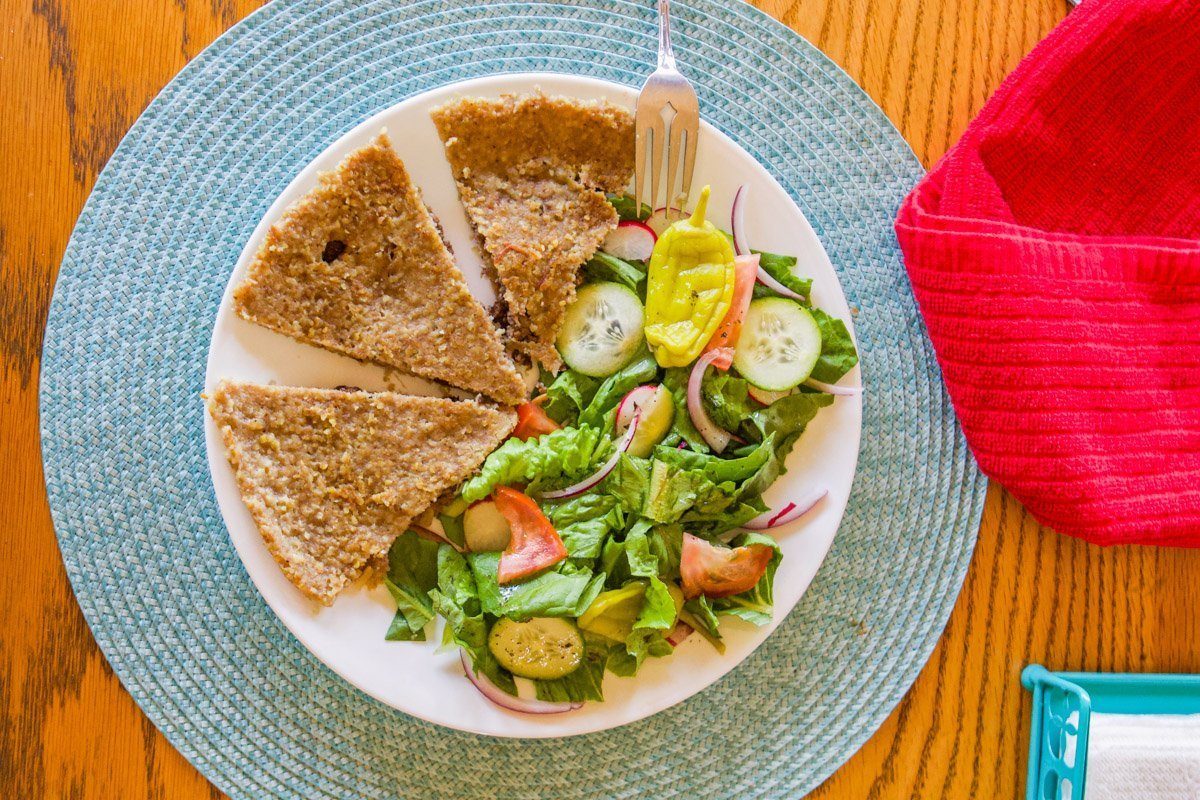
Kubba is a delicious Middle Eastern dish with many variations! Sometimes it's prepared with bulgur and other times with rice (Kubba Halab). Other times the kubba is shaped into little dumplings and cooked in a stew (Kubba Hamuth). It can also be prepared in a casserole dish and sliced into serving sized portions.
This particular dish, originated in Mosul, Iraq, hence the name. The shell is prepared with a mixture of meat, bulgur, and semolina, and the meat filling is heavily spiced and very flavorful. Sometimes raisins and roasted pine nuts are also included, however they're optional!
Jump to:
😍 Why You'll Love This Recipe
- Kubba Mosul might take a long time to prepare but the results are so worth it!
- They freeze well so that you can make one batch and fill the freezer for many future meals! Especially if you make them individual-sized like I like to do.
- It's much cheaper to make them vs purchasing them, if you can even find them in specialty markets.
🛒 What You Need For This Recipe
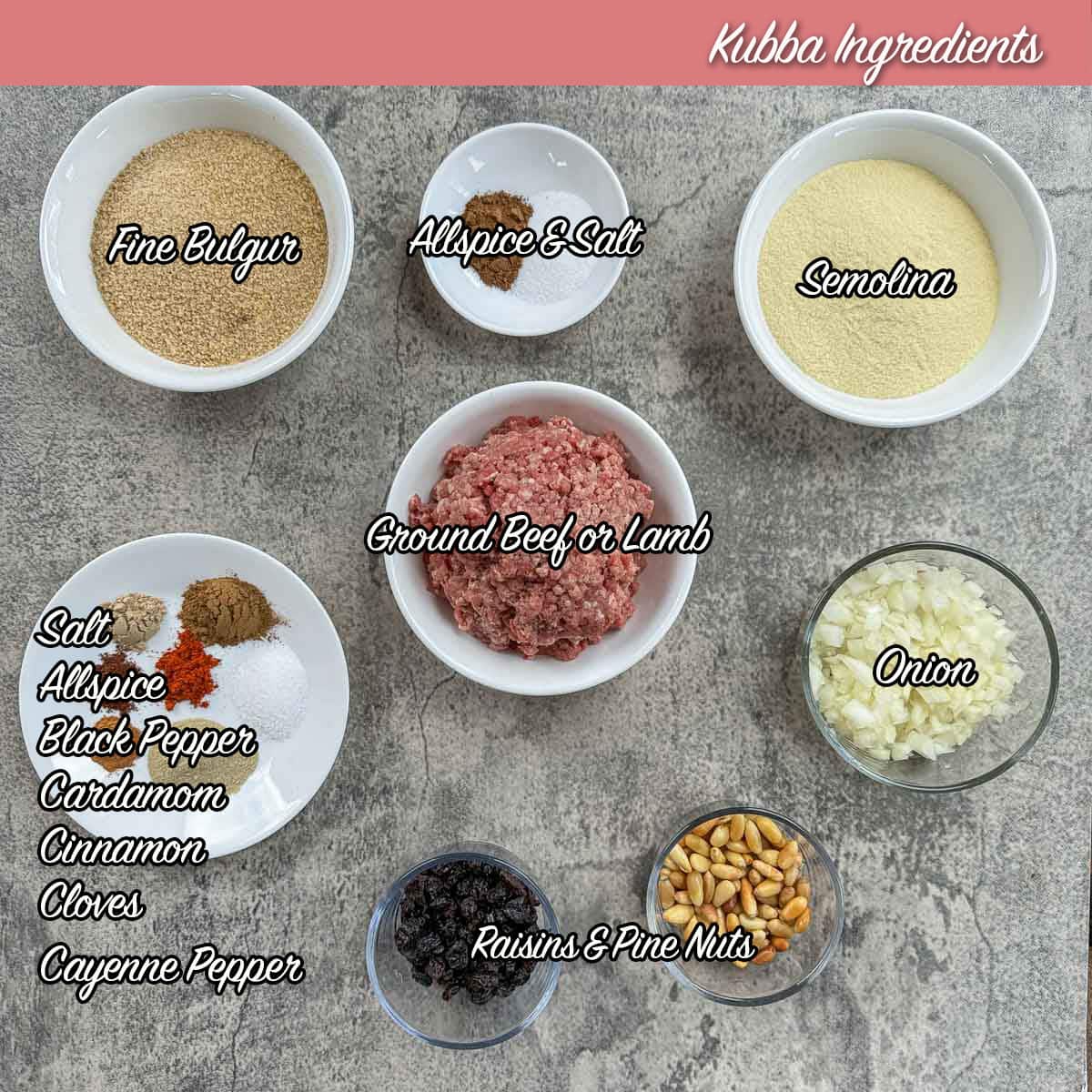
🔖 Ingredients & Substitutions
- Meat: You can either use ground beef or ground lamb, or use a combination of the two. I like to use meat with around 15% fat.
- Grain: To make the shell, you'll need #1 fine bulgur. It comes numbered 1-4, with one being the finest. You'll also need some Enriched Durum Semolina.
- Vegetables: One yellow onion
- Spices: Salt, allspice, black pepper, cardamom powder, cinnamon powder, ground cloves, and cayenne pepper. Alternatively, you can use baharat spice mix.
- Optional: Roasted pine nuts and raisins can also be added and highly recommended!
🔪 How to Make Kubba
Prepare Filling
Cook meat, onion, and filling spices in a pan. Transfer to a plate to cool.


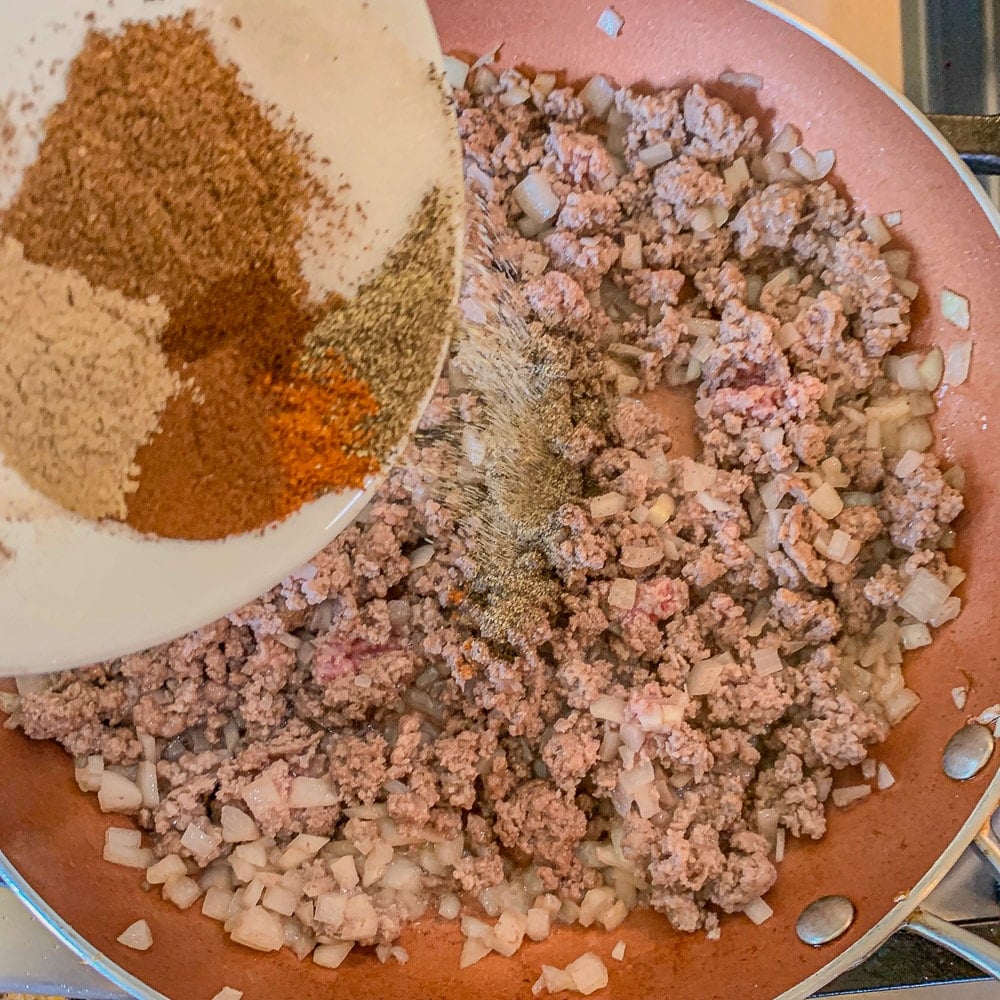
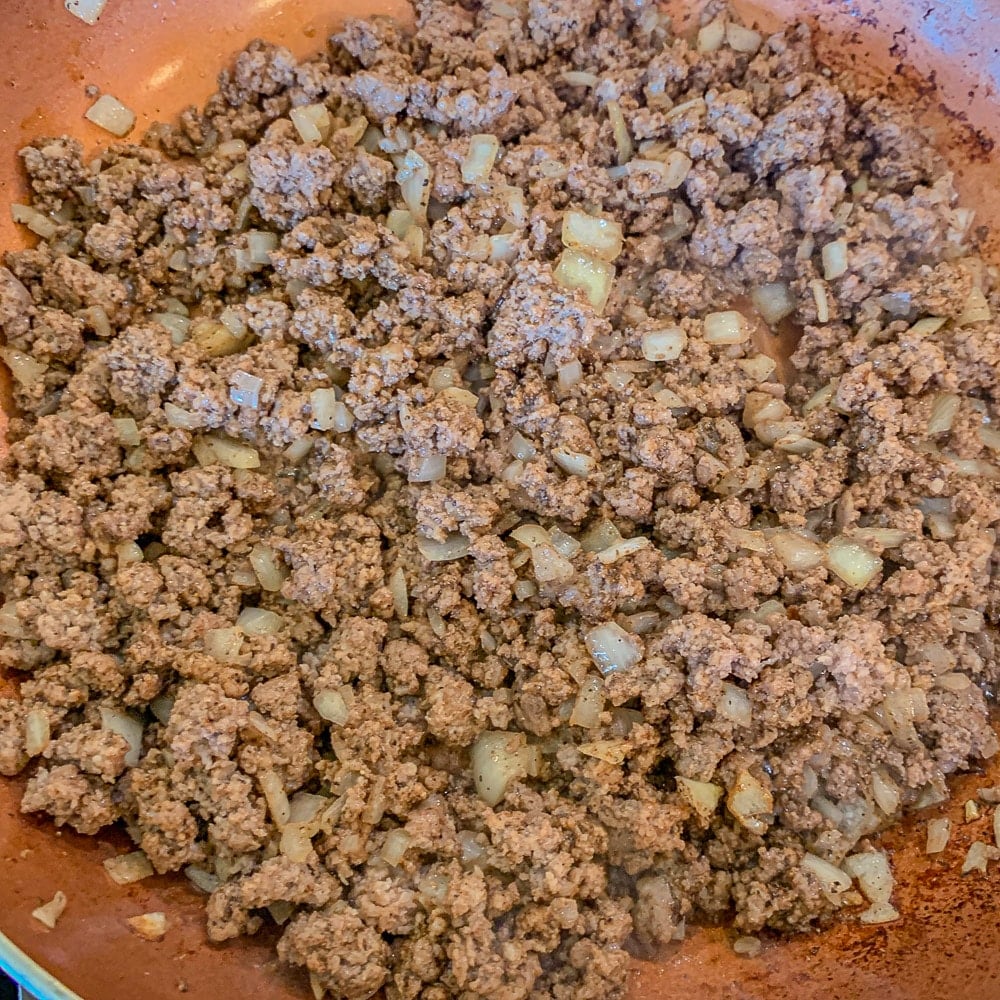
Pro Tip: If you want to include raisins, almonds, or pine nuts, toast them in the same pan and add them to the filling mix.
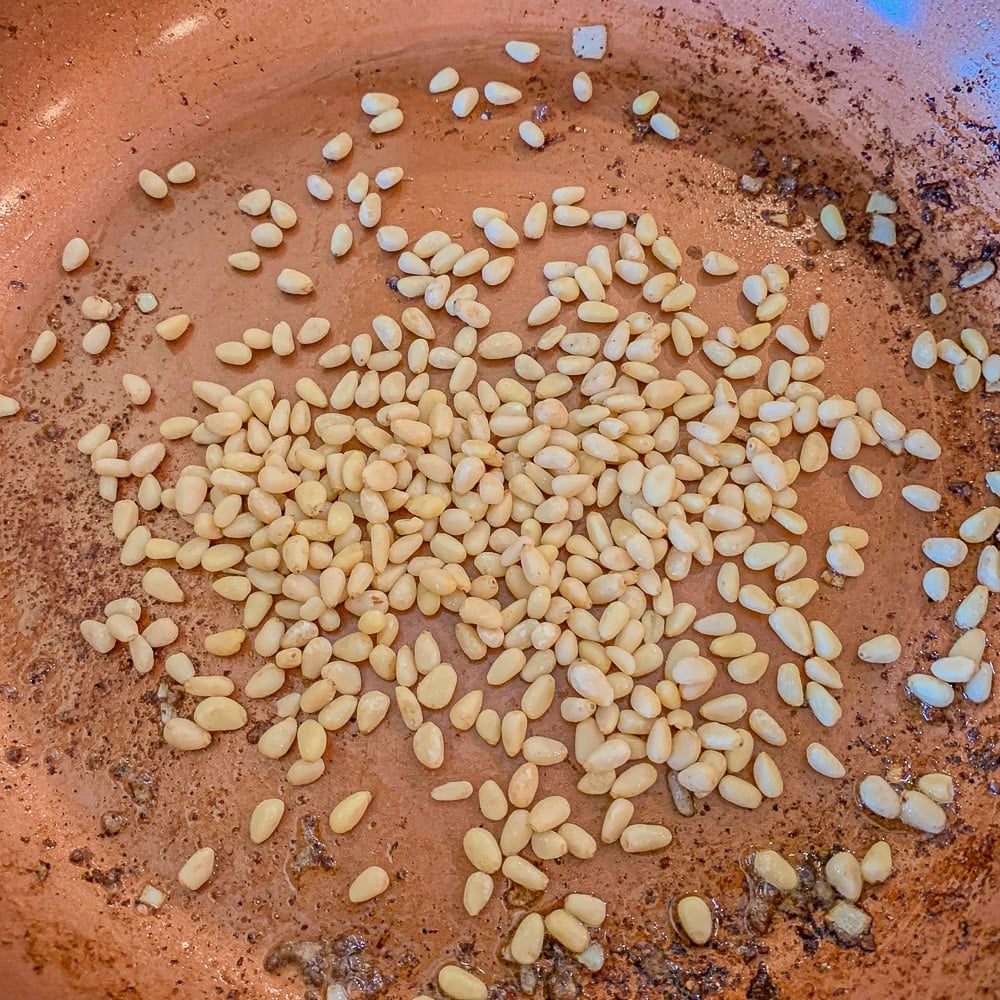
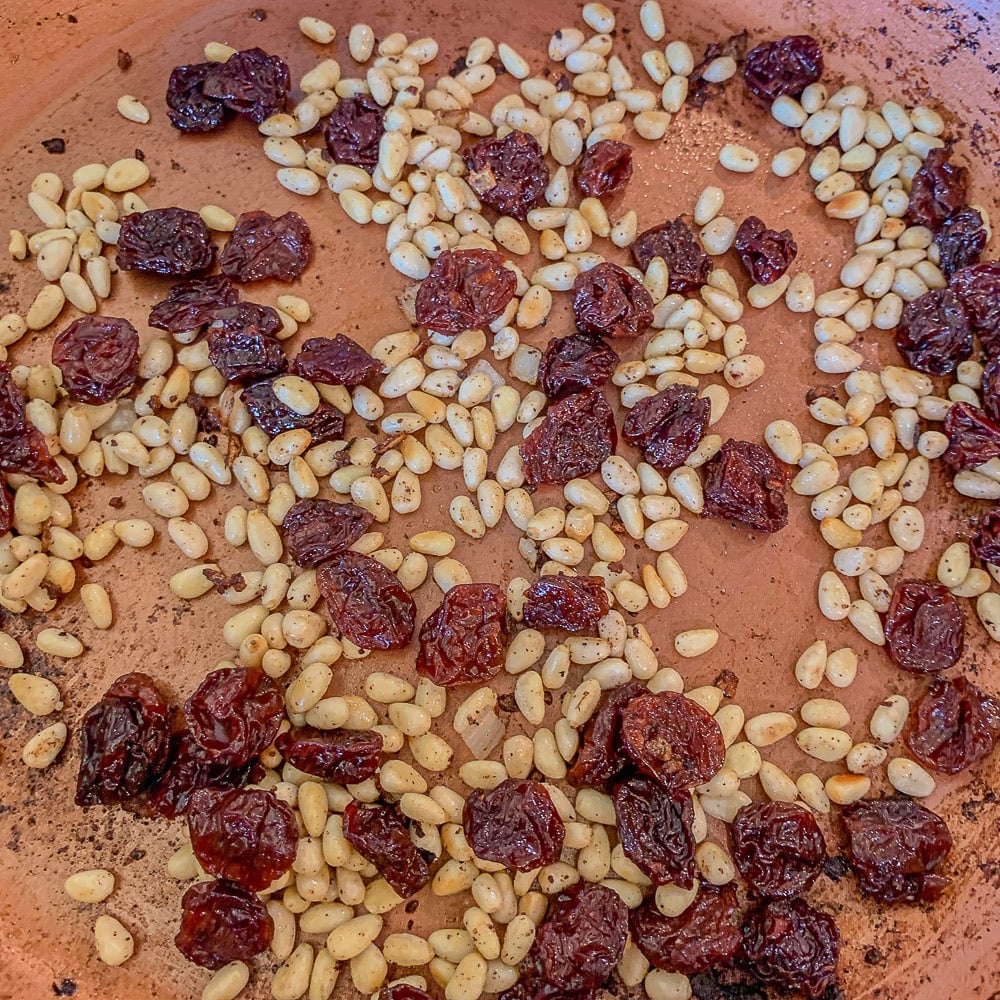
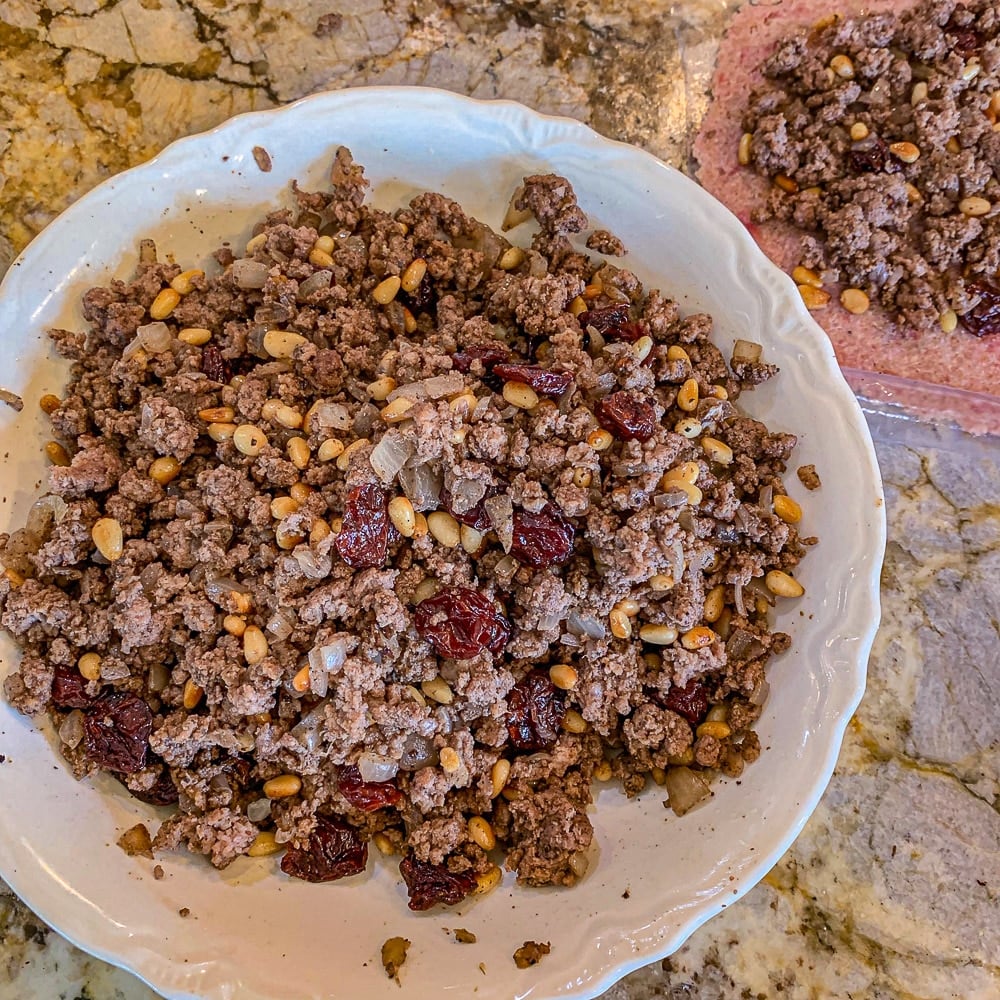
Prepare Shell Paste
Place the bulgur in a bowl and pour one cup of warm water over it. Set it aside for 10 minutes to soften. Add semolina (or rice flour), meat, salt, and allspice to the bulgur. Knead thoroughly with your hands until completely mixed. Run the mixture through a meat grinder or food processor to form a paste.
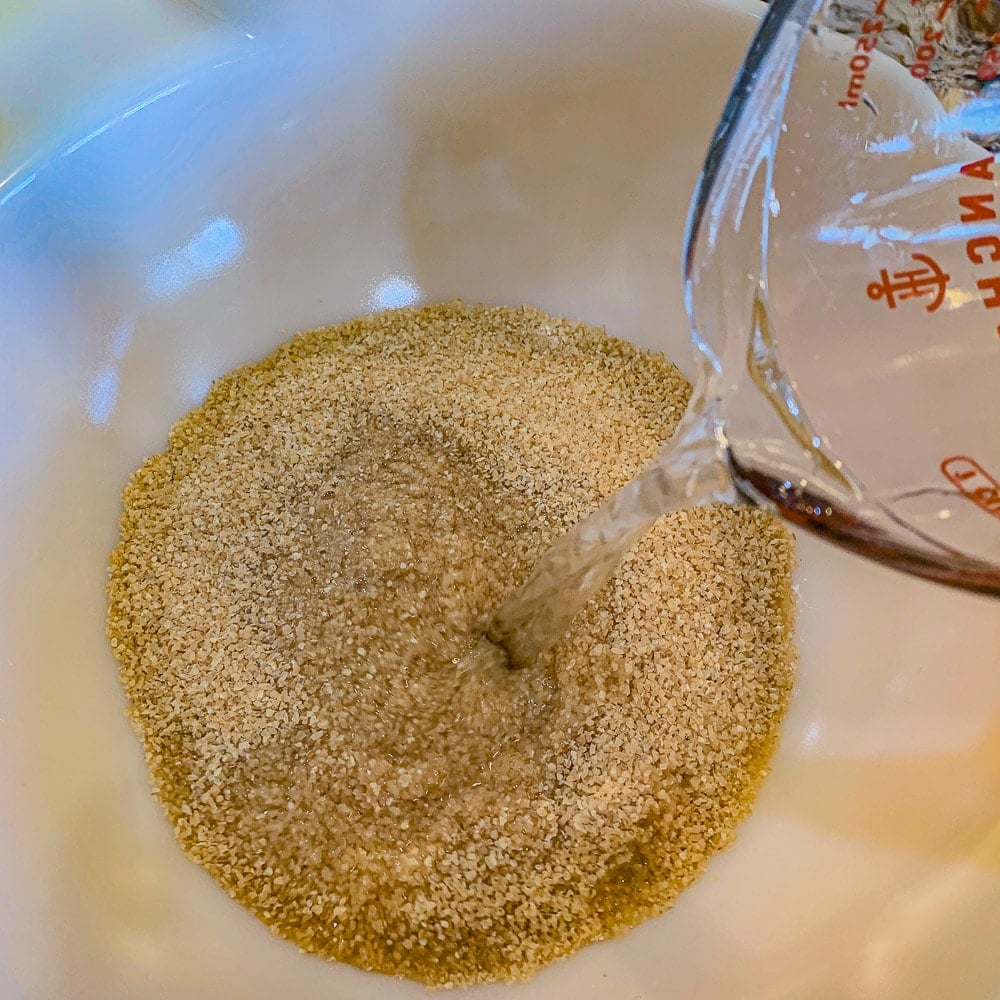
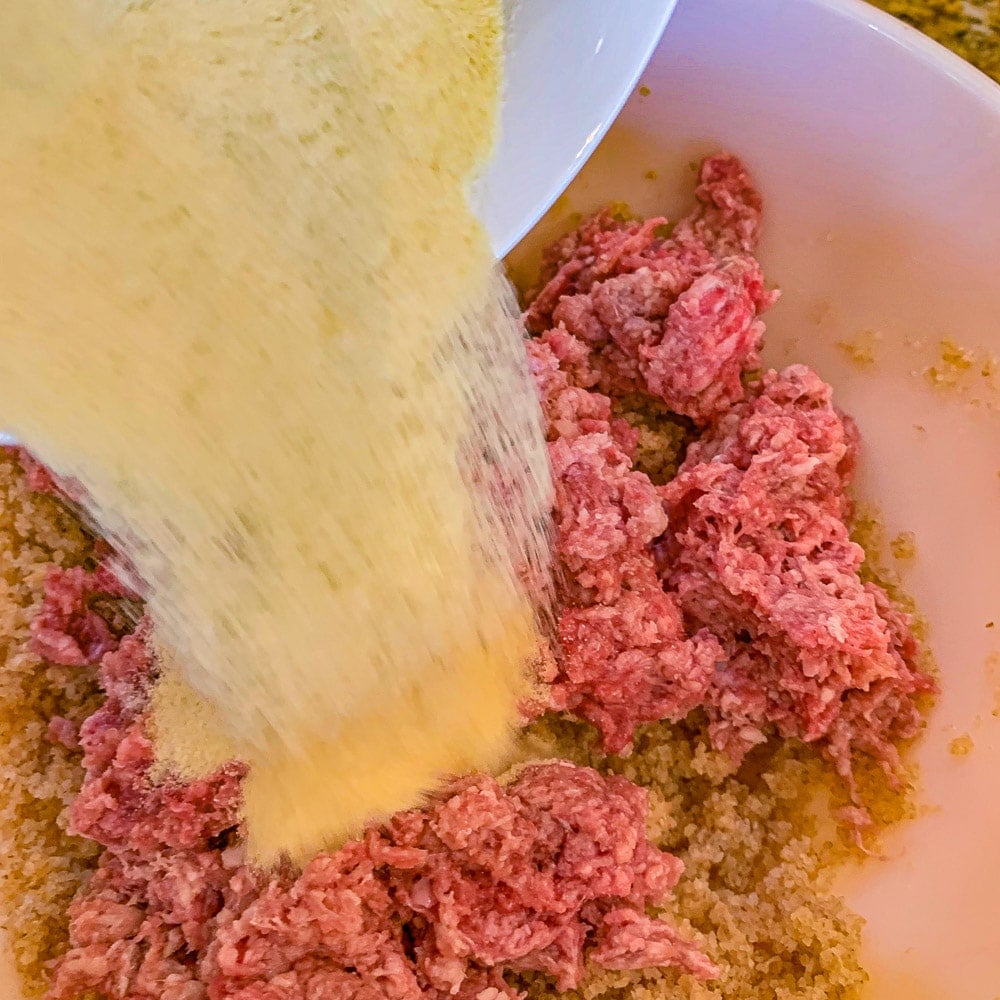
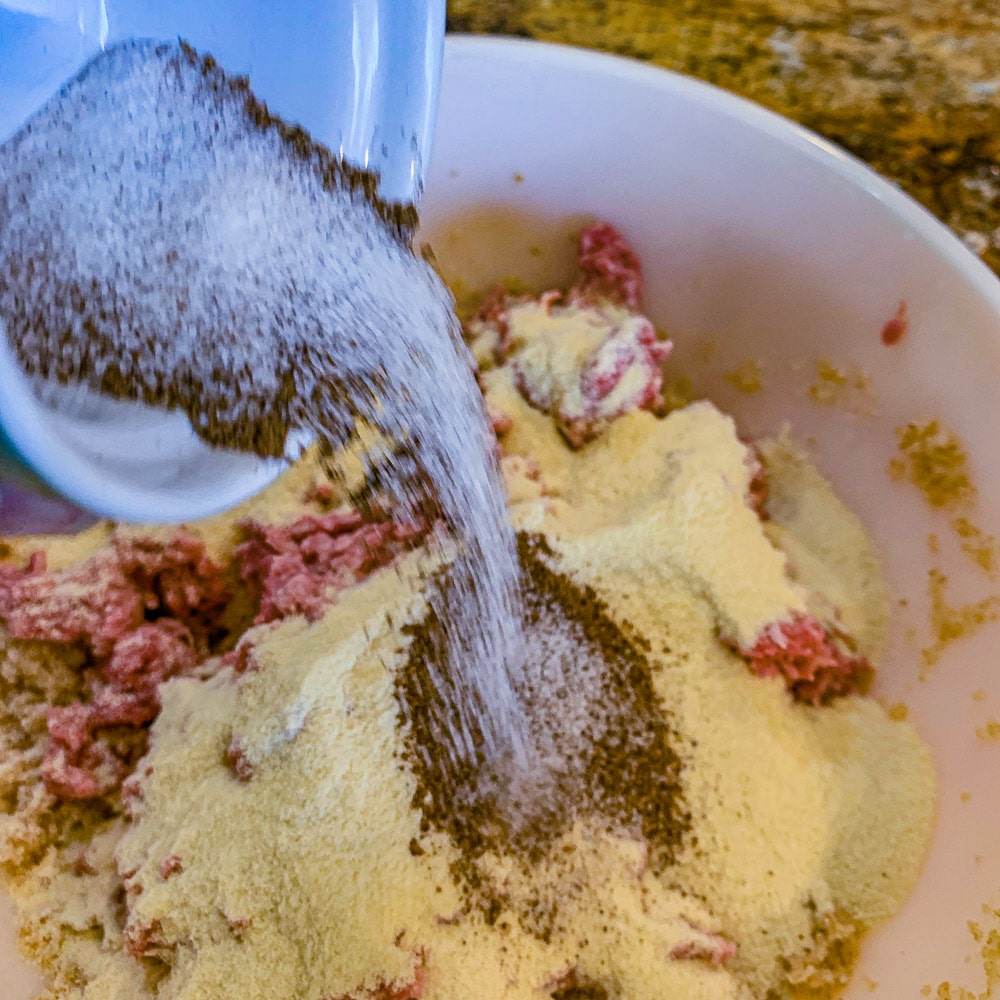
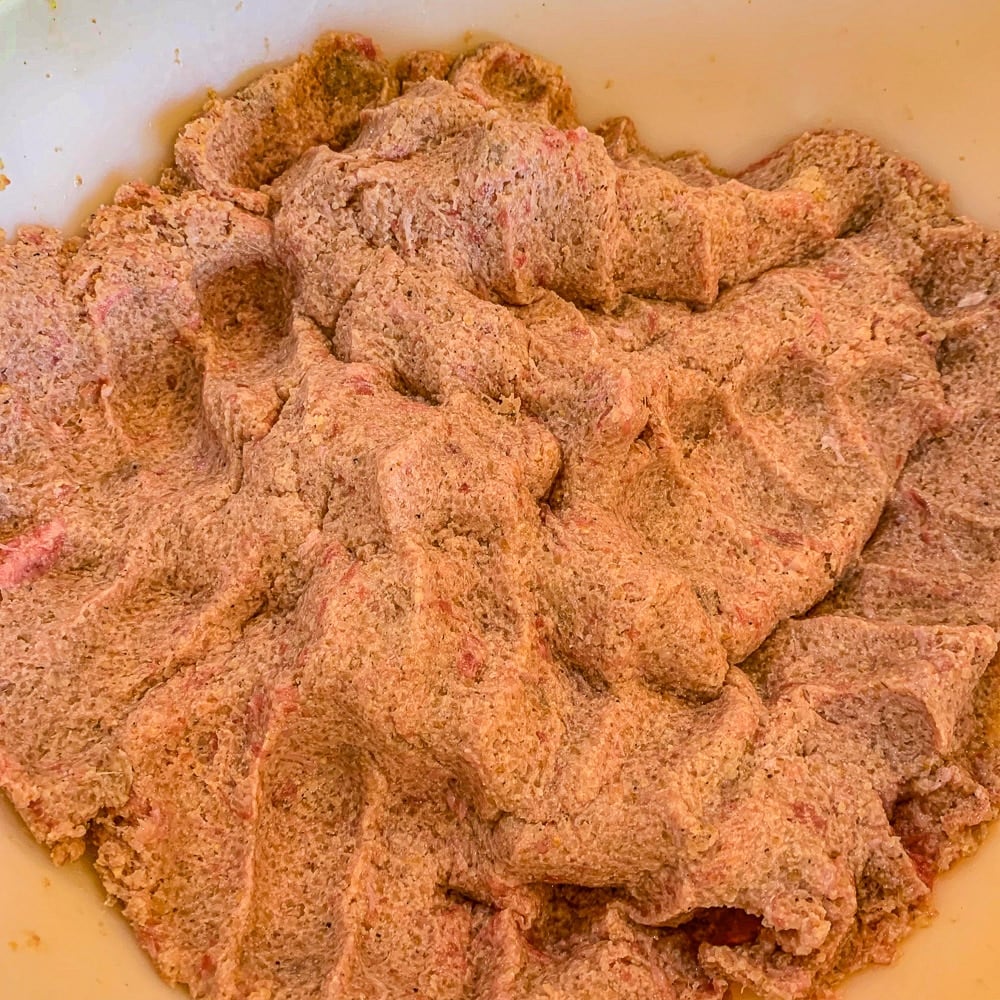
Assemble Kubba
Get two 1 gallon-sized ziplock bags and slit the side seams using a knife or scissors, then cut off the part that seals the bag. Rub the inside of the bags with a small amount of oil.
Mold ⅛ portion of the paste into a ball. Place in the center of the plastic bag. Cover with the other half. Flatten into a thin circle using a rolling pin. If wrinkles form in the plastic, just lift up the plastic and re-adjust it.
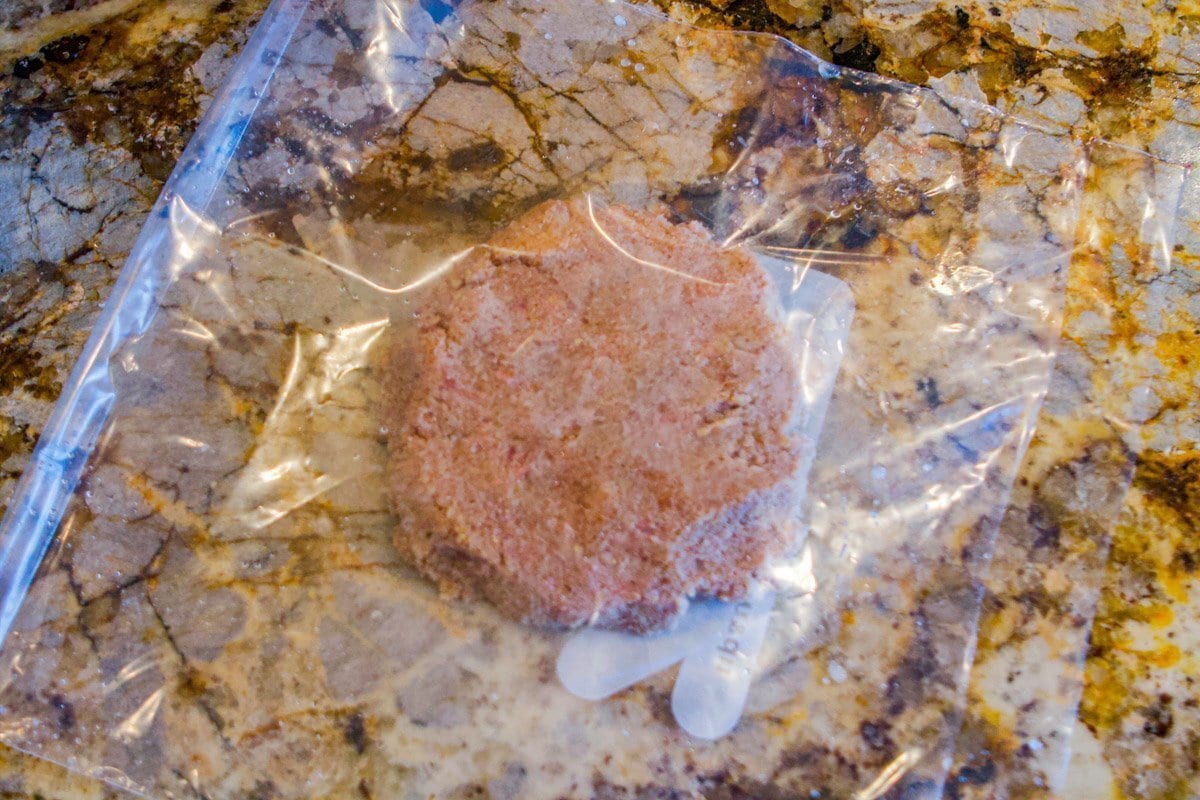
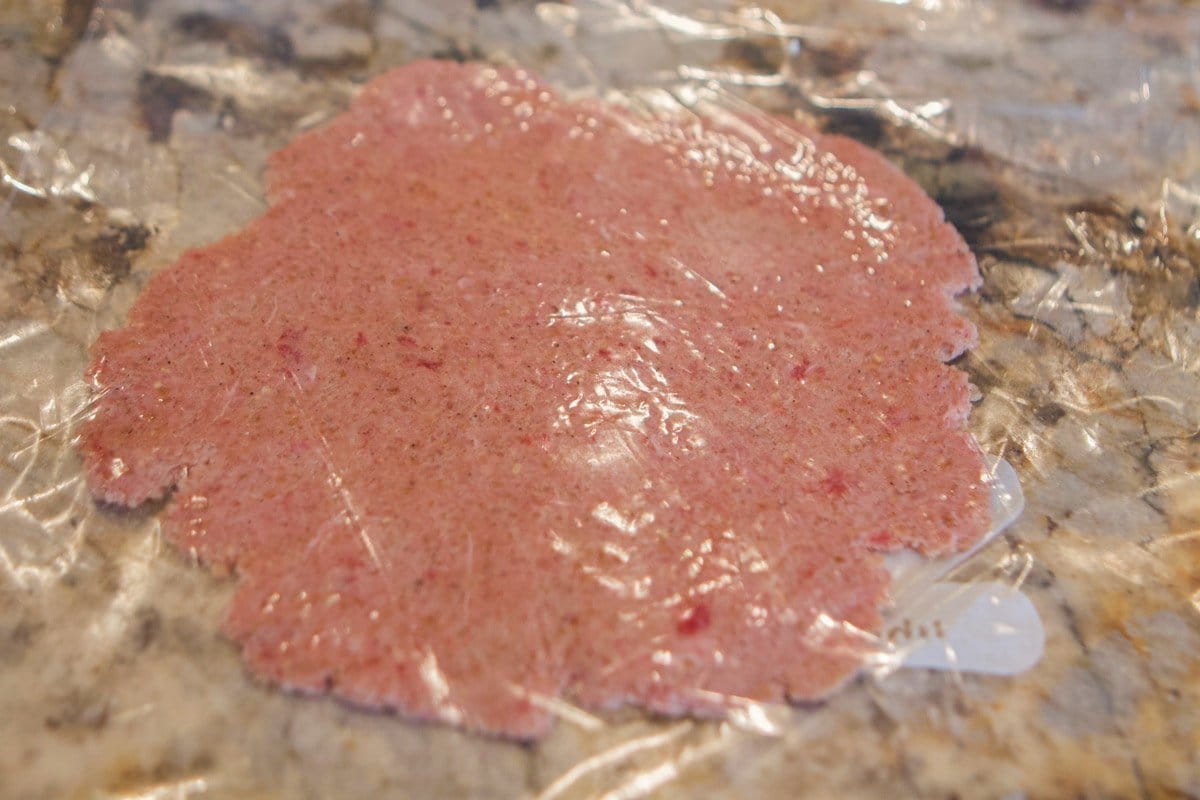
Lift up on the plastic that's covering the paste. Use a 10" plate to trace out a circle. Go around the edges with your finger, removing the extra dough.
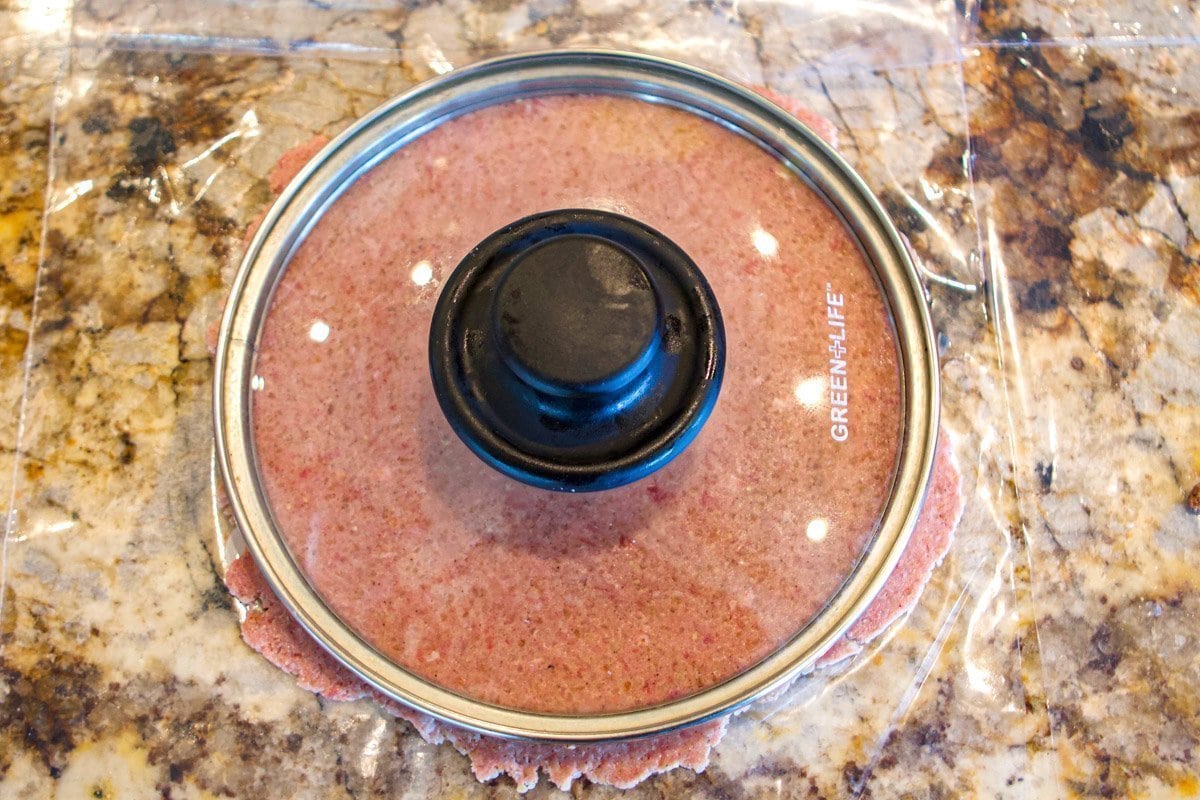
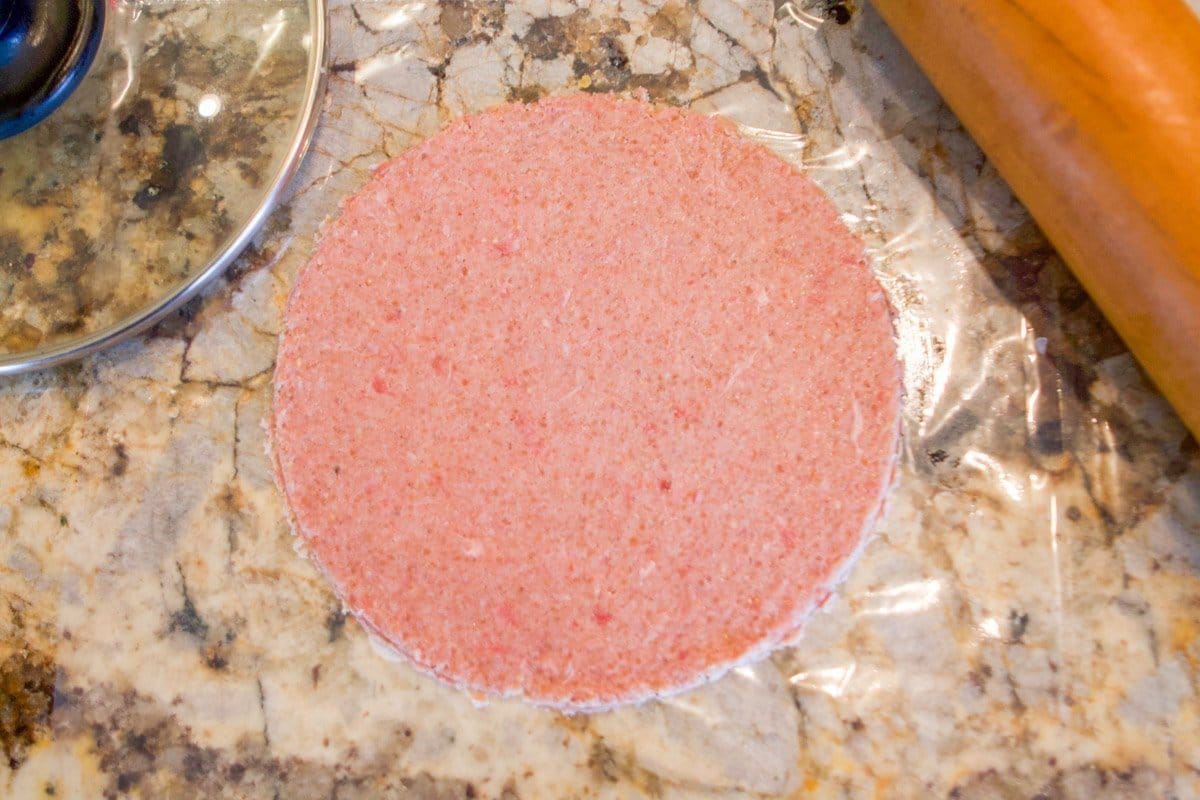
Grab the edges of the plastic bag and set aside. Repeat with another portion of paste, on the remaining plastic bag. Add some filling over one of the circles, leaving ½″ to 1″ border uncovered.
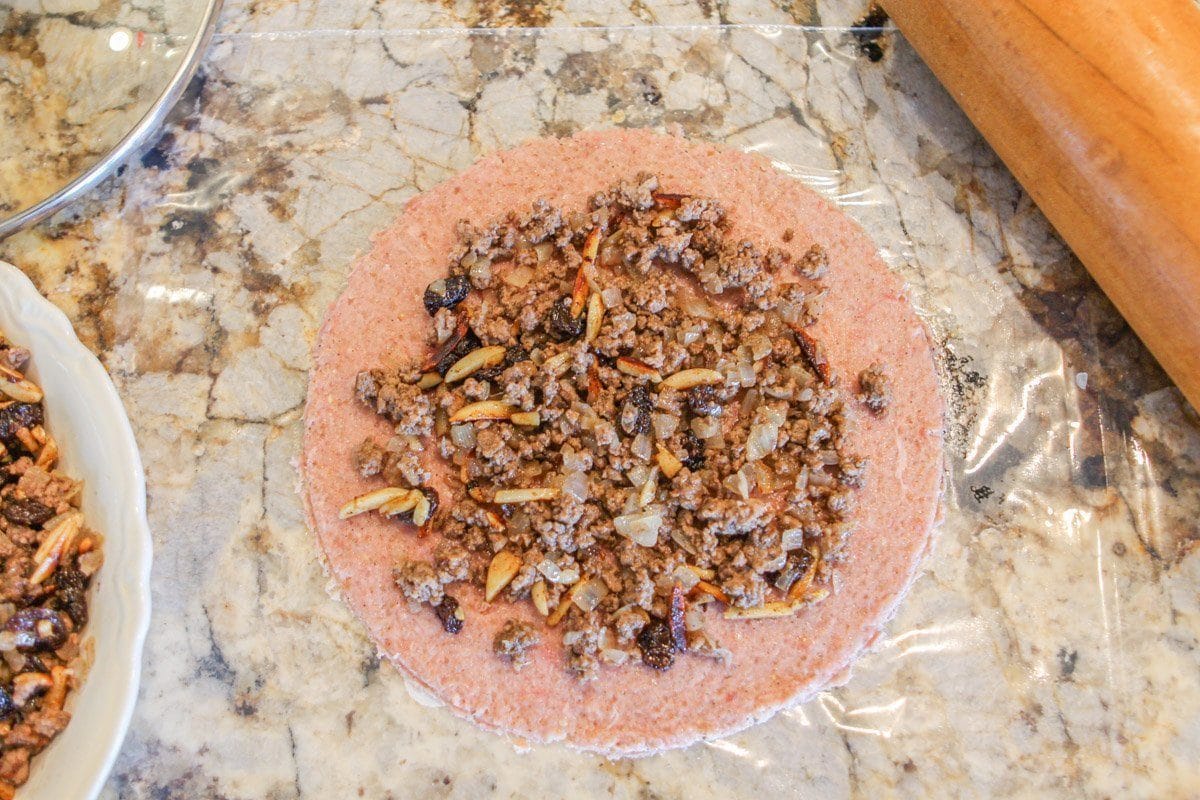
Align the other shell over the one with the filling. Press down on the plastic-covered disc, beginning in the center and working your way toward the edges. This is done to remove any air bubbles and to seal the kubba. Flip the Kubba over to the other side and repeat the steps.

Would you like to save this recipe?
Carefully peel back one of the plastic bags. Use the sides of your pointer fingers to build up the edges by lightly pushing the edges towards the center of the kubba. (see video in recipe card)
Cover the finished kubba with a piece of saran wrap that's long enough to wrap all the way around it. Flip the Kubba over so that the plastic wrap is on the bottom. Carefully peel back the plastic bag and allow the Kubba to dry out. After approximately 30 minutes, fold the plastic wrap over it. Repeat with the remaining ingredients.
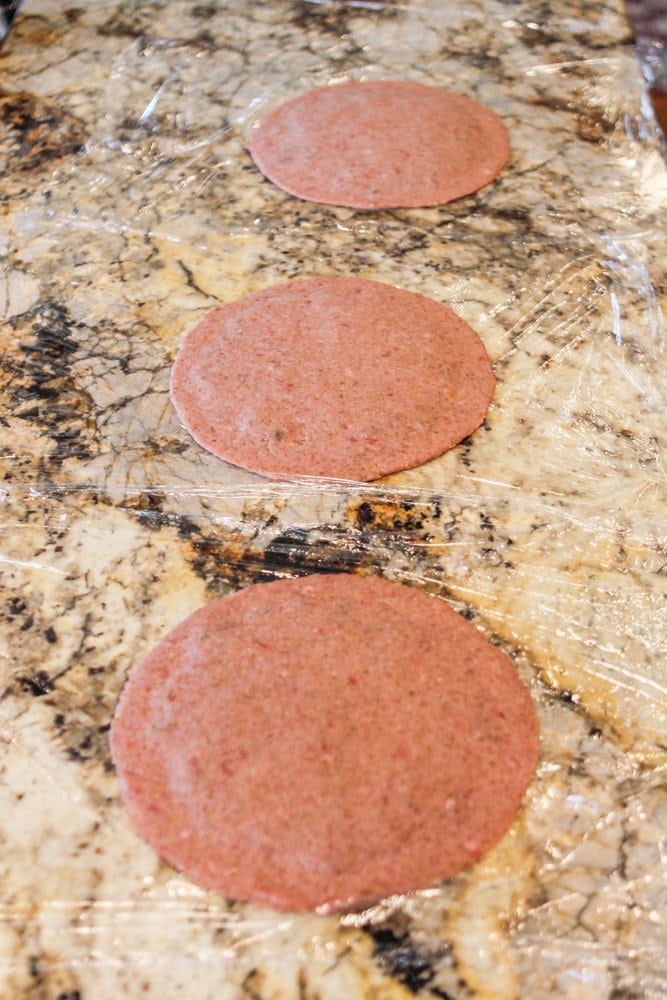
Stack the dried and wrapped Kubba on a ray and place it in the freezer. Once frozen, they can be stored in large freezer bags.
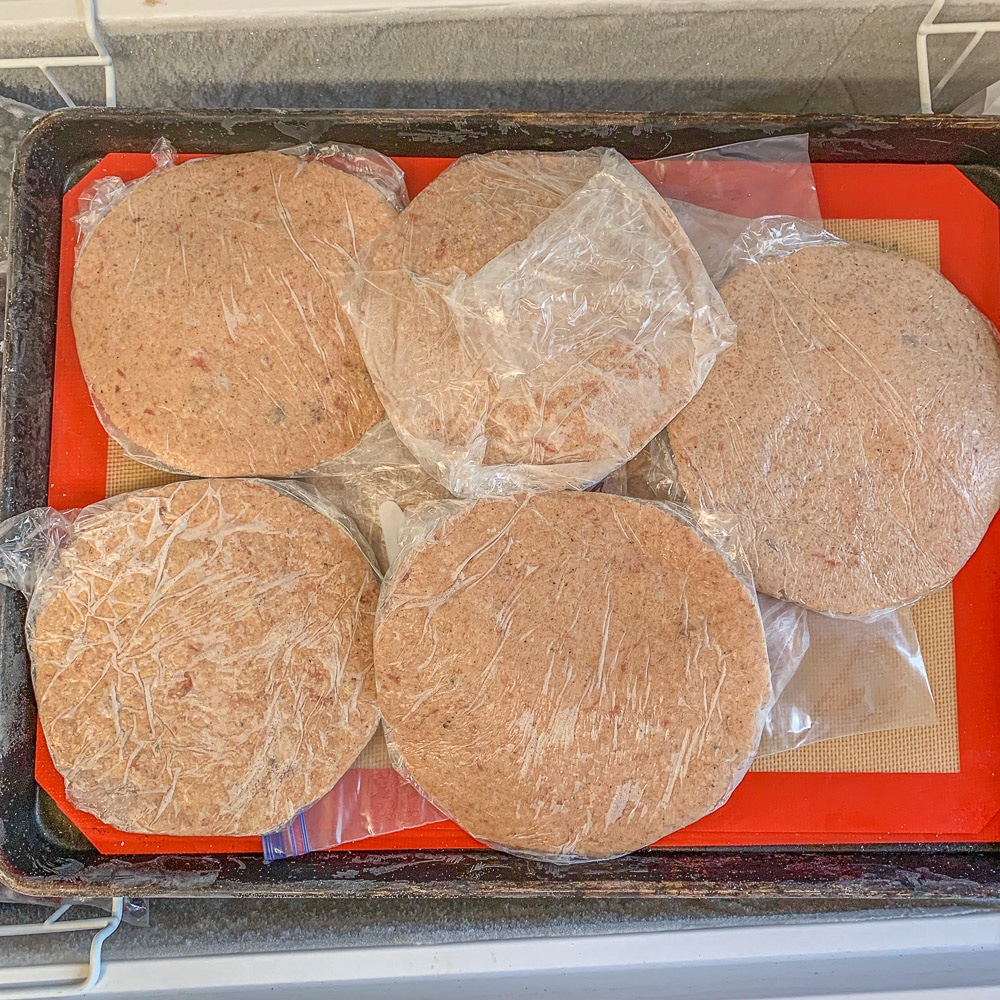
How to Make Individual-Sized Kubba Mosul
Recently, I've been making individual-sized Kubba. To do this, I use a tortilla press. You will need quart-sized ziplock bags instead of gallon-sized bags. Check out the video in the recipe card to see how it's done.
🎛 Cooking Instructions
There are a few different ways that you can cook the Kubba. These options include boiling, frying, and baking. My favorite method is the last one.
Boiling Instructions
Boil water in a pan that's large enough to fit the Kubba into. Next, add Kubba and cook for 5 to 10 minutes, or until cooked through.
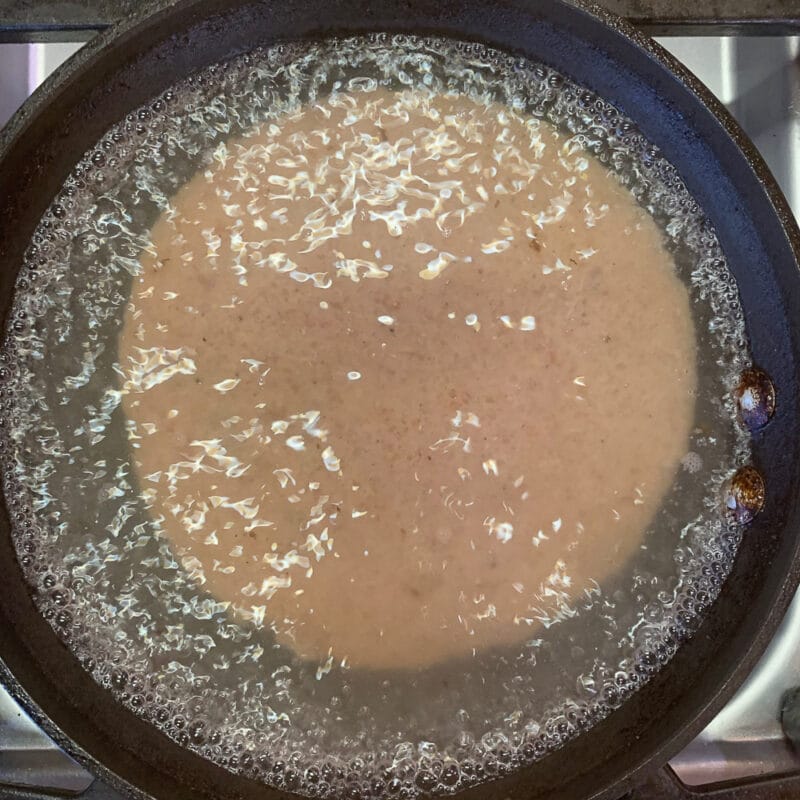
Carefully use a few spatulas to remove the Kubba from the pan. Alternatively, you can partially cover the pan with a lid to drain the water from the pan and slide the Kubba out.
Frying Instructions
Add a few tablespoons of oil to a pan and fry the kubba for a few minutes on each side or until the Kubba is brown and crispy.
Baking Instructions
Brush both sides of the Kubba with oil. Preheat oven to 400-degrees F. Next, wrap in aluminum foil and bake for 20 minutes if fresh, or longer if frozen.
Boiling, then fry
In my opinion, the best way to cook Kubba Mosul is by first boiling ing the kubba, then frying it. Follow the same instructions listed under boiling instructions.
When the time elapses, drain any remaining water and add a tablespoon of oil to the pan. Fry Kubba for a few minutes, then carefully flip to the other side and fry for an additional minute or two.
🍽 Serving Suggestions
Kubba is usually sliced in quarters and served with a Middle Eastern Salad and Pickled Mango (Amba).
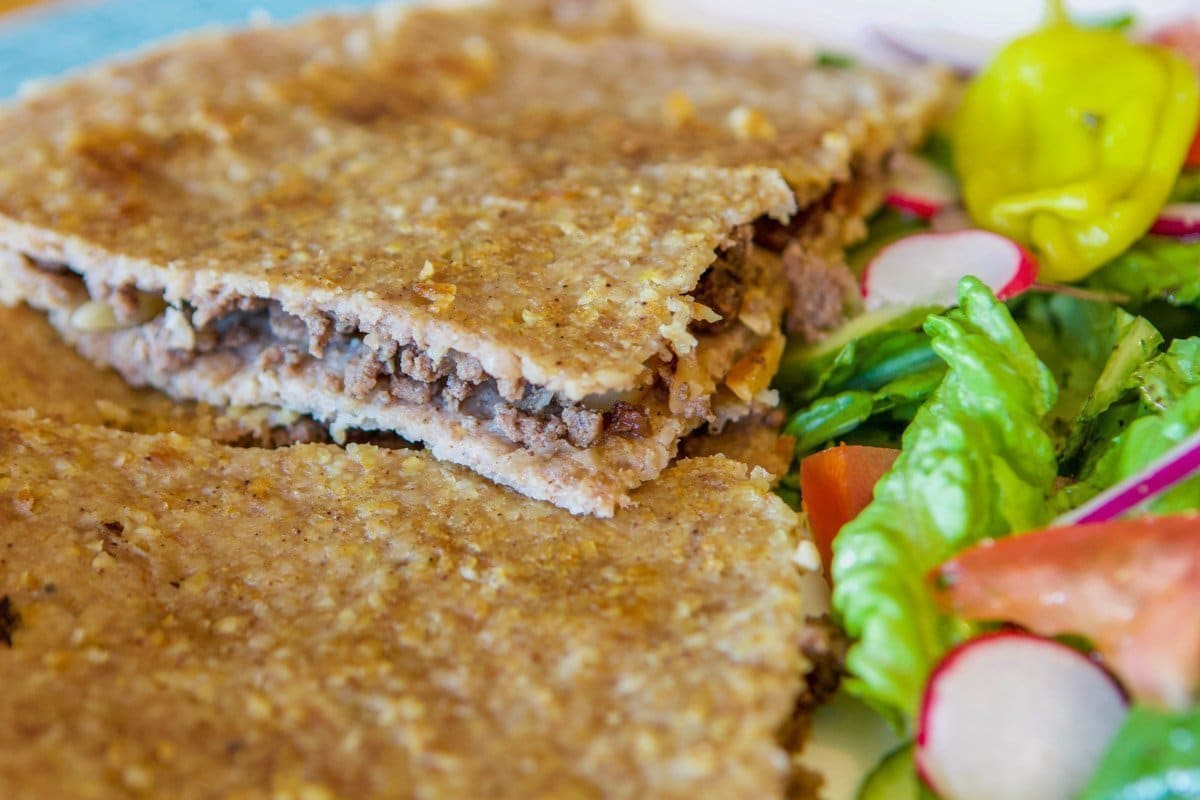
Here's another option, just grab a slice in your hands and eat it like a sandwich. But whatever you do, don't spill any of that yummy filling!
🧐 About This Recipe
You might already know Mosul is a city in Iraq, but did you know it's known for this meat-filled savory pie named "Kubba't Mosul?" The apostrophe "t" simply means Kubba "from" Mosul.
Although mom was known for her cooking skills, Kubba Mosul was not something she made from scratch. It could be because her best friend, Lucy, made the best Kubba Mosul around. Why go through all that work when you can get your friend to do it for you?
I always looked forward to Lucy's visits. I enjoyed hearing the stories of all the mischief she and my mom got into when they were kids. This included holding funeral services for dead lizards, incense, and all!
However, another reason I looked forward to her visits was anticipating the heavenly taste of her Kubba't Mosul. They were always loaded with plenty of pinenuts and raisins. Although I never managed to get Lucy's recipe, this recipe was good enough to impress my mom. I hope it impressed you too!
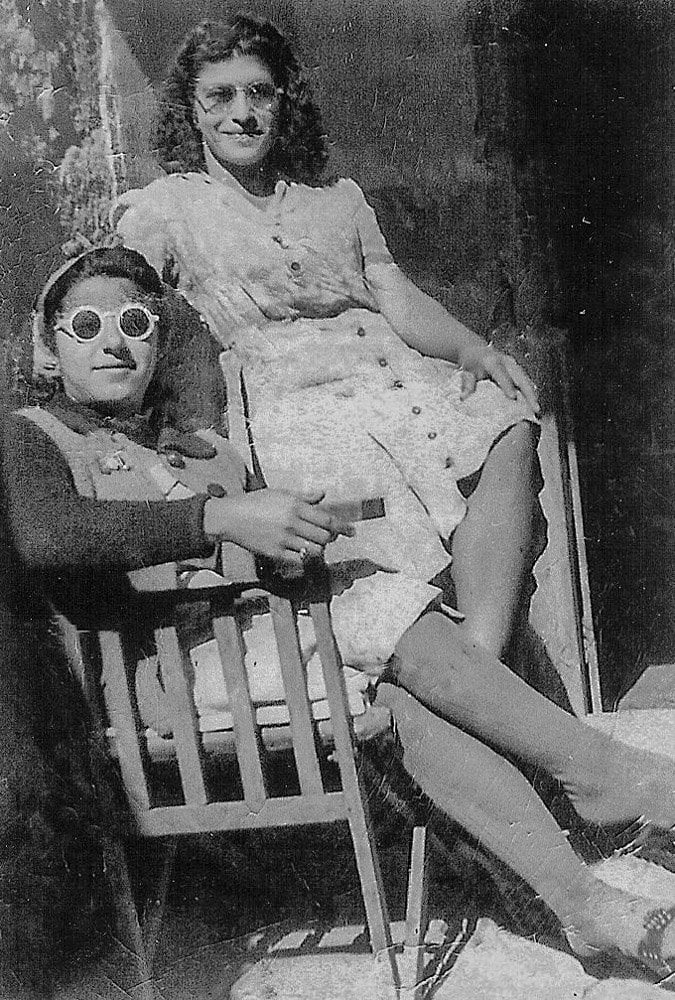
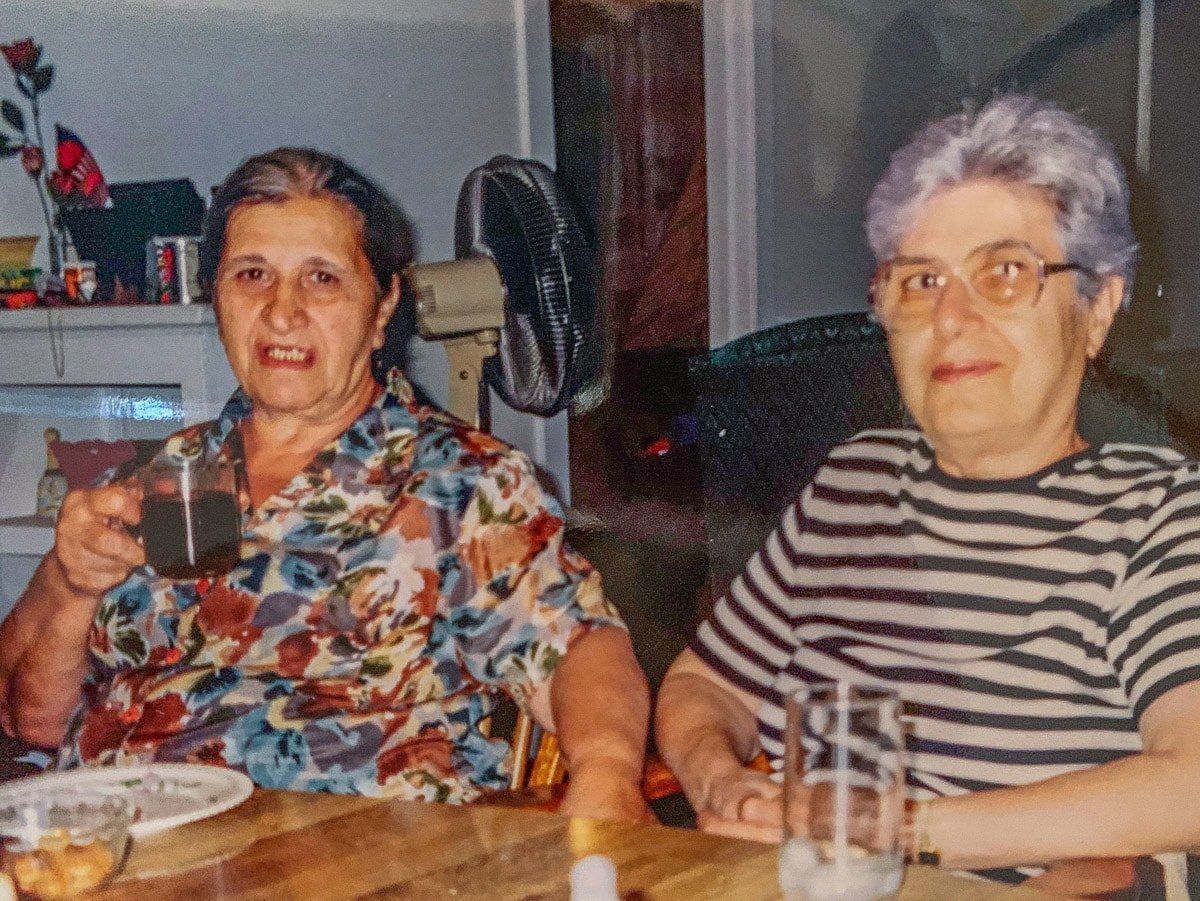
👩🏼🍳 Pro Tips
- If the paste is too sticky, add a little more semolina or rice flour until it's manageable.
- Instead of a plate, you can use a bowl, pot cover, or smaller saucer. It just depends on the size of Kubba that you're making.
- I recommend freezing the Kubba before cooking them. This makes them not as flimsy and easier to handle.
- Sometimes ground onion and baking soda are also mixed in with the paste, although I've never added them.
- Any leftover meat or paste can be frozen and used the next time you make Kubba.
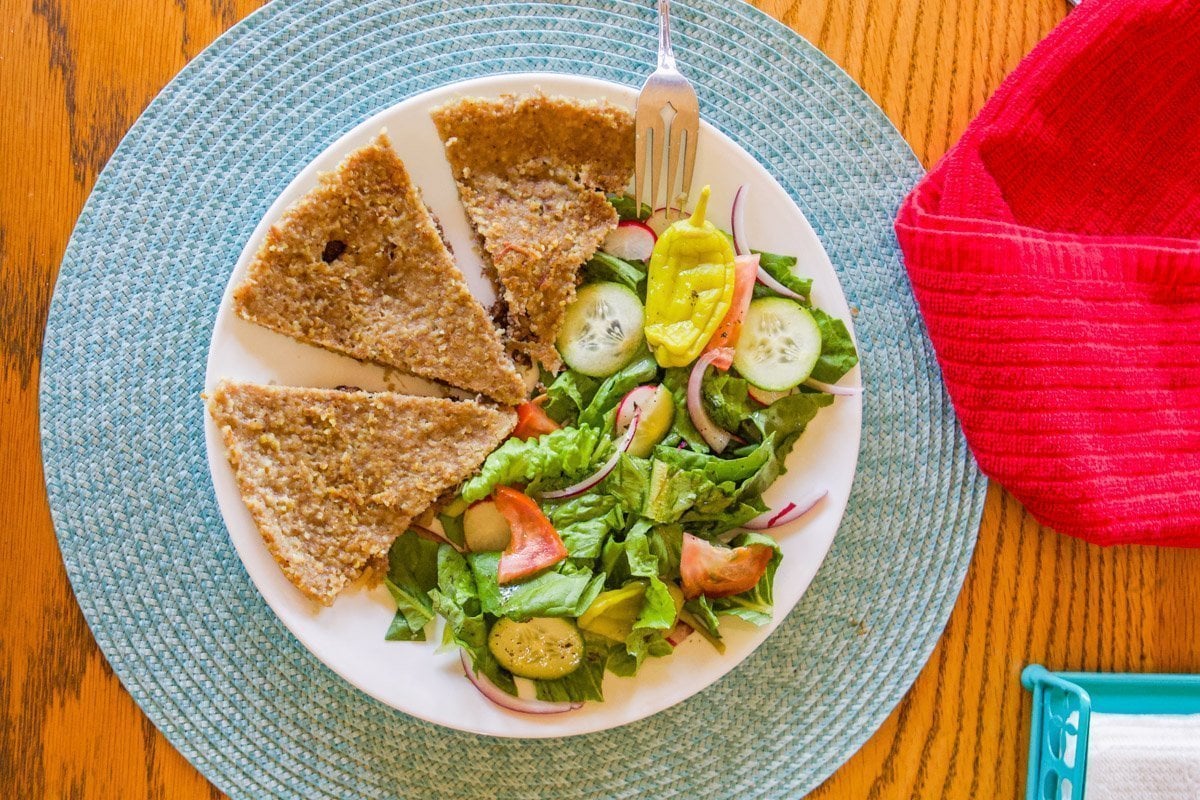
🥙 Related Recipes
Did you make this recipe?
📖 Recipe
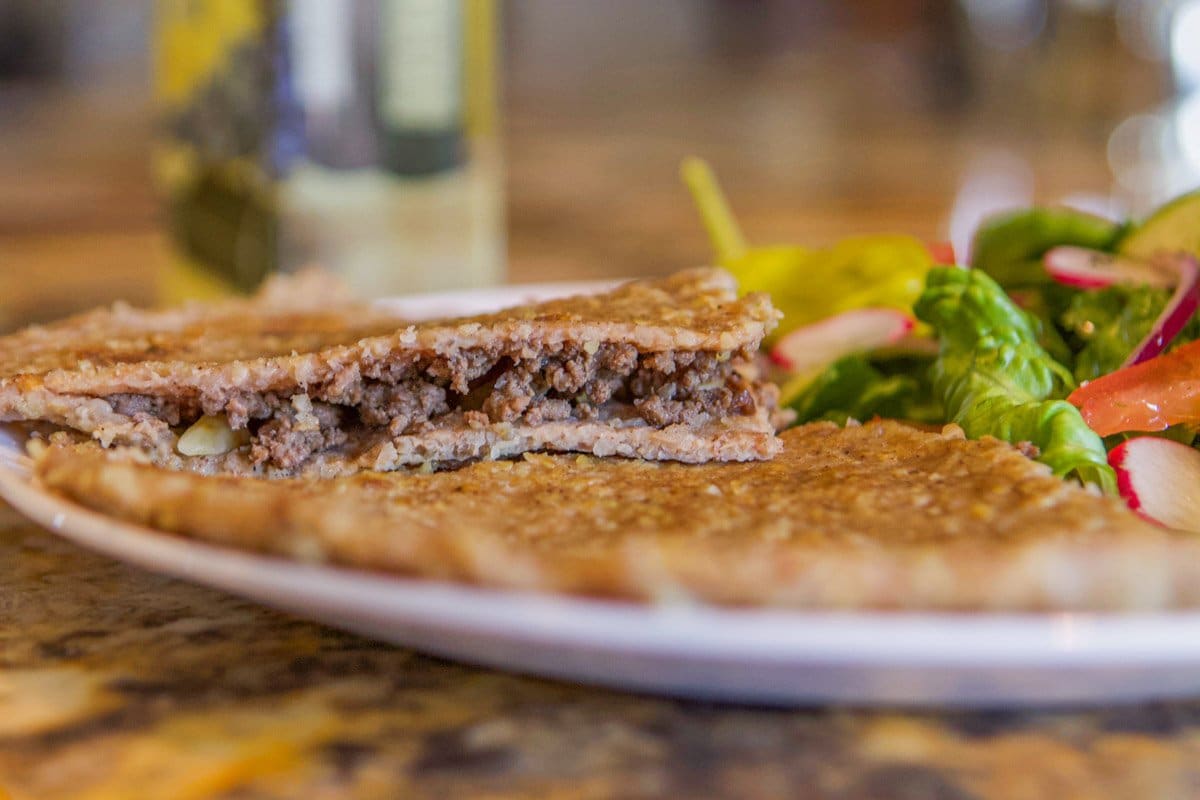
Ingredients
Method
- Cook meat, onion, and filling spices in a pan. Transfer to a plate to cool. If you want to include raisins, almonds, or pinenuts, just toast them in the same pan and add to the filling mix.
- Place the bulgur in a bowl and pour one cup of warm water over it. Set it aside for 10 minutes to soften.
- Add semolina (or rice flour), meat, salt, and allspice to the bulgur. Knead thoroughly with your hands until completely mixed. Run the mixture through a meat grinder or food processor to form a paste.
- Get two gallon-sized ziplock bags and slit the side seams using a knife or scissors, then cut off the part that seals the bag. Rub the inside of the bags with a small amount of oil.
- Mold ⅛ portion of the paste into a ball. Place in the center of the plastic bag. Cover with the other half. Flatten into a thin circle using a rolling pin. If wrinkles form in the plastic, just lift up the plastic and re-adjust it.
- Lift up on the plastic that's covering the paste. Use a 10" plate to trace out a circle. Go around the edges with your finger, removing the extra dough.
- Grab the edges of the plastic bag and set aside. Repeat with another portion of paste, on the remaining plastic bag.
- Add filling over one of the circles, leaving ½″ to 1″ border uncovered.
- Align the other shell over the one with the filling. Press down on the plastic-covered disc, beginning in the center and working your way toward the edges. This is done to remove any air bubbles and to seal the kubba.
- Flip the Kubba over to the other side and repeat the steps.
- Carefully peel back one of the plastic bags. Use the sides of your pointer fingers to build up the edges by lightly pushing the edges towards the center of the Kubba.
- Cover the finished kubba with a piece of saran wrap that's long enough to wrap all the way around it.
- Flip the Kubba over so that the plastic wrap is on the bottom. Carefully peel back the plastic bag and allow the Kubba to dry out.
- After approximately 30 minutes, fold the plastic wrap over it. Repeat with the remaining ingredients.
- Stack the dried and wrapped Kubba on a ray and place it in the freezer. Once frozen, they can be stored in large freezer bags.
- Boil water in a non-stick pan. Next, add the Kubba to the boiling water and cook 5 to 10 minutes or until cooked through.
- Drain any remaining water and add one tablespoon of oil to the pan. Fry Kubba on one side until crispy, then flip and fry on the other side. Slice in quarters and serve with a salad and pickled mangos.
Nutrition
Video
Notes
- If the paste is too sticky, add a little more semolina or rice flour until it's manageable.
- Instead of a plate, you can use a bowl, pot cover, or smaller saucer. It just depends on the size of Kubba that you're making.
- I recommend freezing the Kubba before cooking them. This makes them not as flimsy and easier to handle.
- Sometimes ground onion and baking soda are also mixed in with the paste, although I've never added them.
- Any leftover meat or paste can be frozen and used the next time you make Kubba.

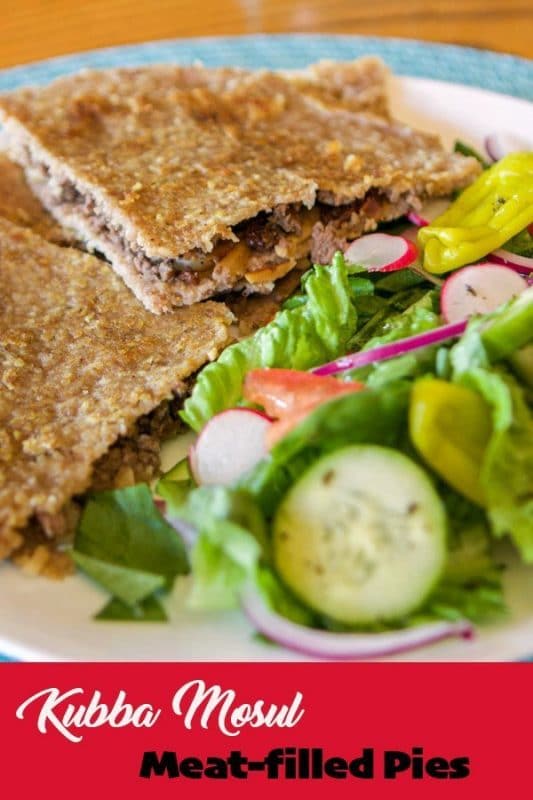
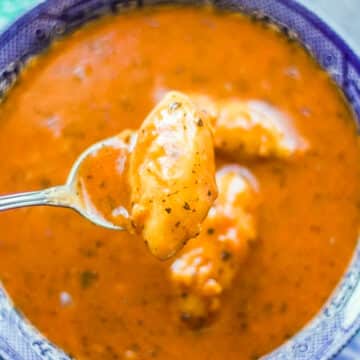
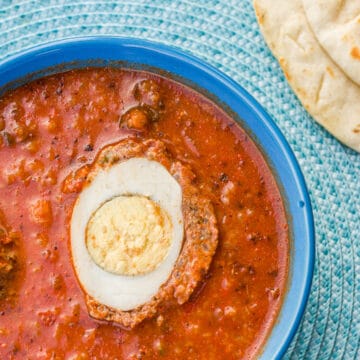
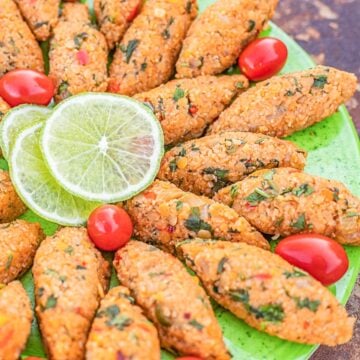

Huda says
Hi thanks for the recipe. Which semolina shall i use as most shops have fine or coarse semolina
Many thanks
Huda
Hilda Sterner says
I've only seen the fine semolina, which is the kind I use. It should definitely be finer than the bulgur. I hope that helps.
Huda says
That’s perfect thank you!
Rachel says
Hi Hilda! Thank you for sharing this beautiful recipe! My grandmother used to make this in a large (maybe 9x13?) baking dish and score the top in to diamond shapes and then bake it in the oven, have you ever seen it made this way? I'm wondering what the bake time and temp should be in that case, do you have any suggestions??
Hilda Sterner says
Hi Rachel,
Thank you for your comment. I have made it that way before. I find that it comes out kind of dry, however, if you would like to make it that way, it's definitely easier! Just divide the dough/paste into 2 portions. Then oil your pan and smooth out one portion of dough on the pan, followed by the filling and the remaining paste over it. Rolling it out with a rolling pin would be helpful so that it's smooth. Then you would score/oil it and bake in a 350 degree F oven for 30 to 45 minutes. Good luck!
Rachel says
Thank you so much Hilda!! That's very helpful!
Lyndsey says
Hi Hilda, I’m so sorry I didn’t get back to you sooner; something came up in my life and I have not had time to respond. But thank you for your prompt response, and I will absolutely get back to you if or when I try substitutions. I know how distinct bulgur is, from other Assyrian dishes we ate at home, and replacing it is definitely going to take figuring out. But I do have a few thoughts. If nothing else I could ask my mother to make and sample a batch of bulgur-based Kubba to give me precise feedback on the texture & so on of the experimentation, till it’s satisfactory at least. (Or I give up.) I’m so curious to try it!
Thanks again, and blessings.
HildaSterner says
Good luck, looking forward to hearing how it goes!
Lyndsey says
Hi Hilda!
Do you have any thoughts on what gluten free flour or starch to replace the bulgur with? I didn’t have this in my house growing up, so I don’t know what texture to shoot for. I’m not sure whether using all rice/brown rice flour would hold together well enough? It seems likely some gluten free all-purpose or potato starch would help. If you’re not sure, I’m up for the experimentation. Definitely making some soonish. {Probably beef & almond filling, since my mother doesn’t care for lamb & we usually eat together.} Leaning towards the steam & fry method, but I might bake them for ease. It seriously sounds/looks good. I definitely need to get your cookbook someday! Thanks!:)
HildaSterner says
Hi Lyndsey,
This is one of those dishes that's prepared a certain way by everyone. The bulgur is what makes the dish, so I've never attempted to replace it with anything else. I will do a little digging to see if anyone has tried anything to replace it and let you know if I find something. If you want toexperiment in the meantime and see if it works, that would be great too. The only issue I see is since you've never had Kubba before, you don't know what texture you're shooting for. Flour alone won't do it because you need a coarse grain, like bulgur.
Lisa Sellars says
I use quinoa instead of bulgar (for kibbeh, tabouli ect.)
*make sure to rinse the quinoa well be for soaking, it gets rid of the bitterness,(I'd use boiling water and let it soak at least 30min).
you would probably need more quinoa because it doesn't swell up the same as bulgar.
good luck.
Hilda Sterner says
I use quinoa to make tabouli when I don't have bulgur on hand, but I've never tried in in kubba before. I will definitely try it soon, since I have some in the pantry. Thank you for the information!